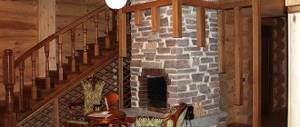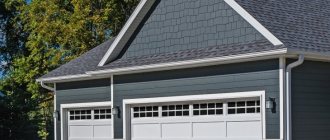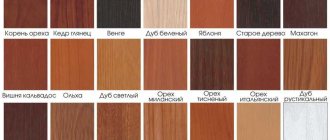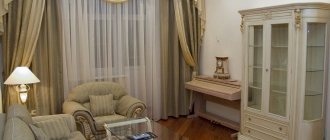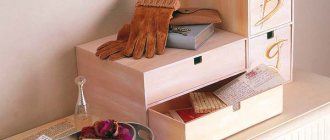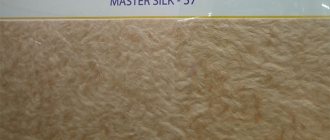The main advantages of attic insulation
Layers of Insulation Before Laying the Floor
The benefits of properly insulating your loft are well known. First of all, it is about maintaining heat in the house. There are also other factors to consider, such as the health of you and your loved ones.
Proper attic insulation can bring many benefits to you, your family and your home.
Save money on your electricity and gas bills
Better attic insulation saves you money. After all, a poorly insulated house can lose a quarter of its heat through the roof.
The simple solution is to install appropriate insulation
If this insulation is the recommended thickness of 270mm, you could save up to 25% on your electricity or gas bills.
Good insulation increases the value of your home
Improving the energy efficiency of your home makes it more valuable. According to statistics from completed home purchase and sale transactions, real estate with energy-saving technologies was sold at an average of 14% higher price.
Properly installed insulation can improve your health
A damp problem can affect your health or the health of other family members.
Poorly insulated attics and those where flooring is installed incorrectly can cause damp and condensation. This can lead to mold which, along with dampness, means you are more likely to have respiratory problems, respiratory infections, allergies or asthma.
Problems often arise when insulation is compressed by improperly installed attic flooring. This will stop the air flow between the floor and the insulation.
It is important to lay a solid base on top of the insulation
This can lead to problems such as:
- The insulation loses its thermal efficiency.
- This causes cracks in the ceiling.
- Water vapor generated in the home rises until it hits the cool surface of the lower attic floor.
- This may cause condensation to form inside the insulation.
- The condensation then begins to seep down, creating dampness and affecting the ceilings.
If you want to use your attic space for storage, adequate air flow is essential. This should be considered an absolute necessity.
Helps the environment
A properly insulated private home can reduce CO2 emissions by up to 80kg per year. Reducing CO2 emissions means you are doing your part to reduce global carbon emissions. And therefore the consequences of climate change.
Reduced wear and tear on your boiler
- If your boiler has to produce more heat than it needs, consider it won't last as long as it could.
- Having proper attic insulation means that you will create a stable living environment inside your home.
- This will help extend the life of your boiler, which is another way to save money!
Insulating the attic with polyurethane foam
Use of polyurethane foam for thermal insulation of the roof. Click on photo to enlarge.
Polyurethane foam today is one of the most versatile types of insulation. This material must be sprayed onto any surfaces that need to be insulated.
It fills all cavities and irregularities very well and lays down in an even layer. This insulation hardens very quickly and does not allow moisture to pass through.
Very often, polyurethane foam is used to insulate attic floors and the inside of a gable roof. It is worth noting that even a thin layer of such insulation makes it possible to perfectly retain heat in the room.
This type of insulation is lightweight, and when applied in several layers it will not deform the attic floor structure.
This insulation is not susceptible to fungal parasites and mold. Such properties are very important, since the roof of a house is constantly exposed to natural influences.
Polyurethane foam is also a non-flammable material, so in the event of a fire it does not allow the fire to spread further. For some time, the insulation will be able to keep the fire in one place and there will be a chance to extinguish the fire in time.
Many insulation materials can be susceptible to damage from rodents, and in private homes there are plenty of such visitors. Polyurethane foam does not attract rodents and various insects, and will serve you for several decades.
Insulating the attic with polyurethane foam
How to properly insulate the attic floor of your house with polyurethane foam? It is best to apply such insulation to all elements of the attic roof. This will make the structure more durable and quite stable. Polyurethane foam will not lose its properties during temperature changes. Also, you will not need to additionally protect it from moisture with foil or film, as required by fiber insulation.
Before you start
Before you start insulating your attic, there are a few things to consider. These things will affect the work required to perform the job at a professional level.
Existing insulation
Attic space with existing insulation
Does your attic look like this?
Most attics already have some kind of insulation. Although in most cases it is either poorly installed, or compressed, or has a thickness significantly lower than the recommended 270 mm. If any of this describes your isolation, you probably need to work to fix it.
Can't see the insulation because it's hidden under the sheathing? Here are some options:
- If you can tell that the height of this floor is greater than 270mm or more above the ceiling, you may already have the insulation installed correctly.
- You can lift one of the boards farthest from the hatch and inspect what is under it. Just be careful, there may be electrical cables or pipes under the boards.
- Once you have access to the insulation, you can check its thickness. You can also check to see if it has been crushed by any plantings.
- There must be a gap to allow air flow over the insulation. Without this clearance, you may experience condensation buildup and related problems.
Warm or cold attic
What you plan to store in your attic will determine whether you will find it warm or cold. You will need a warm attic if you plan to use it as a hobby room.
Or if you need to store climate sensitive materials. Otherwise, a cold attic will suffice, but let's look at the benefits and work involved with both.
Cold attics
The advantage of cold attics is that they are cheap and relatively easy to install. This is because the only insulation needed is between and on top of the floor joists, preventing heat from entering the attic.
In a cold attic, only the floor is insulated
This type of insulation is subject to temperature fluctuations and condensation. The term “cold” attic can be misleading as it can get very hot in the summer!
Warm attics
To create a warm attic, it is necessary to insulate the floor and the lower part of the roof. This will allow heat to penetrate inside and regulate its temperature. But this heat cannot escape through the roof.
In warm attics there is no problem when it gets too hot in the summer or very cold in the winter. Consequently, a much wider range of uses is possible.
The underside of the roof can also be boarded and decorated, which can greatly transform your attic. The downside is that creating a warm attic is more difficult without professional help. Therefore, it is more expensive.
However, there is one important advantage to creating a warm attic. This will easily increase the value of your property more than the cost of the work. It also gives you many more possibilities and options for using the extra space created.
This is of course not on the same level as a full loft conversion due to the weight limitations of conventional loft flooring.
How to insulate an attic in a private house?
It is advisable to note that the properties and characteristics of all thermal insulation materials are different. Some of them are subject to combustion, others are not. Some insulation materials, for example, are “afraid” of moisture, while others are not afraid of it. Therefore, before insulating an attic in a private house, it is very important to choose high-quality and reliable insulation for these purposes.
Today the market offers consumers various types of thermal insulation materials, so, of course, there is plenty to choose from.
To insulate the attic, you can use insulation materials such as:
- Mineral wool;
- Polystyrene foam or polystyrene foam;
- Polyurethane foam;
- Blown insulation.
Cheaper materials for insulating the attic in a house are still:
- Wood sawdust;
- Linen;
- Expanded clay, and others.
As you can see, there is currently no problem with how to insulate an attic in a private house. The main thing is to choose the right high-quality and reliable insulation for these purposes. Well, when choosing one, of course, you should start from its characteristics and properties, which will be discussed in more detail below.
Pros and cons of mineral wool
It is quite easy to insulate an attic using mineral wool, since this material bends easily and takes any shape. In addition, mineral wool has a high density, and most importantly, it does not burn, which is very important to consider when choosing insulation material for the attic.
In addition, mineral wool has a long service life, which is also important. It does not cake over time, so it is excellent for insulating horizontal surfaces.
The only disadvantage of mineral wool is that it can absorb moisture, and this has a detrimental effect on its thermal insulation properties.
Expanded polystyrene or polystyrene foam
In addition to mineral wool, modern thermal insulation materials such as expanded polystyrene or polystyrene can be used to insulate an attic in a private house. The advantages of using expanded polystyrene and polystyrene foam when insulating an attic include:
- A light weight;
- Ease of installation and processing;
- High thermal insulation performance;
- Affordable price;
- Absolute immunity to moisture, mildew and mold.
Of course, these two popular insulation materials also have their certain disadvantages.
First of all, they include high flammability.
Pros and cons of polyurethane foam
Polyurethane foam is a completely new building material that has a number of significant advantages. Along with a high degree of adhesion to absolutely any type of surface, polyurethane allows you to better seal all joints, cracks and various types of defects.
Also, this thermal insulation material is quite light in weight, so you don’t have to worry about additional loads on the ceiling. In addition, polyurethane is environmentally friendly, it is not affected by moisture, but is afraid of harmful ultraviolet rays.
The insulation of walls with polyurethane foam has already been described in detail previously in a construction magazine. To the disadvantages of polyurethane, in addition to the fear of ultraviolet radiation, you can also add high cost.
How attic insulation works
Simply put, attic insulation traps warm air inside your home and prevents it from rising through the roof. If installed correctly, it will still allow moisture to pass through and therefore prevent condensation.
In an uninsulated home, most of the heat you generate to keep you warm will escape through the walls, floors, doors and windows. And especially through the roof, through your attic. This causes you to generate more heat than you need, increasing both your energy bills and CO2 emissions.
Law of Diminishing Returns
Everyone knows that insulation will help keep your home warm in the winter, but it can also keep your home cool in the summer. How much insulation you need will depend on a number of factors. But the level of thermal efficiency is simply a factor of the depth of insulation installed.
The current recommendation is 270 mm, which provides a U-value (watt/meter2/degree Celsius) of 0.15. 200mm insulation provides a U-value of 0.18 and 100mm provides 0.28.
This means that installing 100mm of insulation in a house without insulation will increase efficiency by 72%. The next 100 mm increases efficiency by another 10%. The difference between 200mm and 270mm is only about 15%.
Graph shows diminishing returns on additional attic insulation
How much attic insulation do I need?
To make the most of the benefits of attic insulation, you need to at least cover the entire floor with clearance around the edges for air flow.
To measure insulation, you can simply measure all the rooms directly underneath and add them together, taking into account the width of the walls. You don't have to be precise, and you should always underestimate so that you have extra insulation if necessary.
If you are building a warm loft you will need a lot more insulation to cover the underside of the roof along with the gable and walls.
Insulating the attic with mineral wool
Mineral wool is made from molten basalt-type rocks. Cotton wool consists of very small fibers that fit tightly together. It is possible to insulate the roof and attic floor with such wool.
Mineral wool really needs additional protection from moisture. Therefore, it should first be carefully wrapped in foil or film so that there are no gaps for moisture to enter. If such insulation gets wet, all its functions are lost.
Scheme of roof thermal insulation using mineral wool. Click to enlarge.
It is possible to insulate the attic floor with mineral wool on your own. There is nothing complicated here. This type of wool is sold both in rolls and in slabs.
When purchasing, you should make sure that the packaging with insulation is intact. If it turns out to be broken, then moisture could get into the insulation along with air and the properties of such insulation will deteriorate.
To lay mineral wool, you first need to make a wooden sheathing. Planks are attached inside the roof, between which this type of insulation is laid.
If the roof floor has beams, then mineral wool can also be laid between them. All joints between the insulator material must be taped with special tape.
It is also worth making sure that the beams do not protrude too much above the insulating structure. Otherwise, you may develop bridges for warm air to escape.
Therefore, it is worth putting insulation in several layers so that all beams are completely covered.
Mineral wool does not withstand physical stress, therefore you cannot move on it, as it can be damaged very easily.
Various types of attic insulation
There are many types of insulation materials available on the market. The main ones are listed below.
Roll insulation
Rolled Insulation
An attic that hasn't been touched in decades may have some insulation between the joists, albeit very little. This is the most common type of attic insulation, and not just because it's cheap.
Watch a short video about the production of roll insulation at Knauf factories:
Sheet insulation is usually made from stone, glass or mineral fiber and comes in rolls. It's very easy to install, especially between joists, which is all you'll need if the temperature of the attic itself doesn't need to be controlled.
This type of insulation is used for floor insulation, but is not suitable for roofing.
Roll insulation is only intended for flat, horizontal surfaces.
So if you plan to spend time in the attic or store temperature-sensitive items, you'll also need to insulate the underside of the roof.
Loose insulation
Loose-fill insulation
If you already have insulation between the joists but it needs to be filled in, you can use additional layers of insulation or use a loose-fill insulation. It consists of a loose and lightweight material that can be laid on top to achieve the desired depth.
- The big advantage of loose-fill insulation is that it is very cheap, especially if you use recycled materials - it could even be shredded newspaper.
- It is also made from other materials such as cork granules, cellulose fiber or mineral wool.
- In the past, loose-fill insulation was made from a dangerous material you've probably heard of called asbestos.
Bulk insulation can really only be used for replenishment. And not very effective if used as primary insulation.
Blown Fiber Insulation
Pictured - Applying Blown Fiber Insulation
If you need to insulate hard-to-reach nooks and crannies, blown fiber insulation is the ideal solution. These can be various types of bulk materials that are blown into the gaps by machine.
The cost of processing services is significant
However, this is only a partial solution and is not enough to insulate the entire attic, especially if it is drafty. It is also expensive because the equipment used is owned by construction companies, which means it will increase the cost of your renovation.
Sheet insulation
Sheet Insulation
If you want a temperature-controlled attic, you'll also need to insulate the underside of the roof. You can buy insulation sheets for this purpose.
Sheets can be made of various materials, natural or synthetic. The quality of insulation is usually excellent, and the boards can be decorated. This is the most expensive type of attic insulation and must be installed by a qualified professional.
This type of insulation requires professional installation.
Materials for attic and roof insulation
For high-quality thermal insulation of attic floors and the roof of a house with your own hands, you need the following materials:
- insulation (mineral wool is most often used, but there are alternative options);
- waterproofing agent (usually vapor barrier foil);
- insulating tape;
- stapler for securing foil;
- wire and nails.
Mineral wool
As mentioned above, mineral wool is used in the vast majority of cases for thermal insulation of attic spaces.
It has become most widespread due to its excellent heat-saving characteristics, resistance to combustion and temperature changes, resistance to most chemicals, and minimal shrinkage, which is especially important when insulating the roof and attic of a house at the stage of construction. Advice! To insulate slopes in the attic, it is advisable to use lightweight mats or slabs based on mineral wool.
Polyurethane foam
Polyurethane foam is rightfully considered a universal heat insulator; it is used for additional thermal protection of various building elements, including the subject of our conversation. Most often, this insulator is used to insulate a gable roof from the inside, since even its thin layer retains heat excellently.
Considering the fact that the thermal conductivity coefficient of polyurethane foam is 2.5 times lower than that of mineral wool insulation, when arranging insulation with its help, you need to make a substrate. Thanks to application by spraying, no joints are formed on the surface, therefore, eliminating the risk of “cold bridges” appearing. The material demonstrates excellent adhesion to all substrates, except for polyethylene film, so during its installation there is no preparatory stage (arrangement of sheathing, etc.). Resistance to moisture and vapor permeability allow you to save on additional waterproofing. Polyurethane foam is light, durable and thin; it places minimal load on the load-bearing structures of the roof. The ease of installation of polyurethane foam allows you to insulate an attic in a private home with your own hands in just one working day.
Insulation of the attic and roof in a private house with penoplex
Often in videos of roof insulation from the inside with your own hands, you can see that penoplex is used as an insulator. This material has a long service life and the ability to withstand maximum mechanical loads. In addition, it belongs to the category of environmentally friendly and does not harm human health.
When insulating the attic and roof with penoplex, they work in the following sequence:
- First of all, the attic is insulated from the inside;
- When all the work at this stage is completed, they move on to finishing the slopes, installing a special sheathing for this.
Advice! To insulate the attic and roof in central Russia, it is better to use penoplex with a thickness of at least 2.5 cm. For the most reliable protection from the cold, it is better to buy material 10 cm thick.
How much does it cost
The price of insulation varies. In Leroy Merlin, the cost of insulation varies depending on the region. Below are prices for insulation materials for Moscow and the region:
| Name of material | Price |
| Ursa insulation heat standard 100 mm 8 m² | 528 RUR/pack (66 RUR/m2) |
| Thermal insulating PIR board PirroUniversal 50x600x1200 mm | 485 RUR/pcs. (618 r/m2) |
| Insulation TechnoNIKOL GreenGuard Universal 50 mm 8 plates 600x1200 mm 5.76 m² | 598 RUR/piece (103 RUR/m2) |
Do-it-yourself attic insulation
Creating a warm attic is definitely not a DIY job. This is because there is work to be done on the roof itself, and damage to it can have dire consequences on the stability of your entire home.
However, it is possible. If you are planning to do any work in your attic, there are a few safety issues to consider before you begin.
- If you are working in an attic without a floor, crawl/tip boards must be installed to ensure safe movement. They can be temporarily fixed in place to eliminate the risk of creating traps or movement.
- Make sure your attic is well ventilated and free of condensation.
- Make sure the attic is well lit so you can see exactly what you are doing. Ideally, try using several LED lights in different locations - LEDs don't get hot and produce a powerful, bright white light.
- Wear a protective face mask to prevent inhaling dust particles.
- Crawling on your knees for any length of time can be quite debilitating, so you may also benefit from using knee pads.
- Finally, if your home was built before 2000, there may be asbestos-containing materials in your attic. If you suspect there is, read the next section very carefully.
Dangers of asbestos
Asbestos Fibers
As mentioned above, it is possible that there are asbestos-containing materials in your attic. Asbestos has been used for thousands of years due to its fantastic properties (durable, fire-resistant, acid-resistant, alkali-resistant, heat-resistant and non-conductive).
Its harmful qualities were discovered only relatively recently. Exposure can lead to a serious long-term lung disease called asbestosis or mesothelioma, which is a type of cancer that develops in the lining that lines the body's organs.
So how do I know if I have asbestos in my attic? If your house was built before 2000, then the likelihood of it being in the attic is high. After this date, it began to be used much less frequently.
You won't know you have asbestos in your attic (or anywhere else in your home) until a professional comes and checks. Asbestos fibers are invisible to the naked eye and have no taste or odor, so it is difficult to tell for sure just by looking at part of the house. For this reason, asbestos is known as the "hidden killer."
The only reliable way to know whether a product or material contains asbestos or not is to have a sample tested by an ISO 17025 accredited laboratory.
Insulating a cold attic
A cold attic is a type of roof design for a house. It performs an important function regarding the preservation of heat in the house. And in general, having an attic in a house is a privilege, because it can suit the different needs of the residents of the house. But so that you do not overpay for heating and can enjoy the warmth in the winter, you will need to insulate the ceiling of a cold attic. Thermal insulation is an integral part of the room. If it is not there, then the building will lose its heat, and you will waste money in vain.
What materials are needed to insulate an attic? Why do this and how? You will learn all this from this article.
What tools are needed for the job?
When working in a confined space, having a respirator is a recognized necessity.
Here are some tips on what tools you will need to insulate your attic:
- Garbage bags.
- Medical mask or respirator.
- Protective clothing.
- Roulette.
- Hand saw.
- Utility knife or scissors.
- Mobile desktop.
How to install attic insulation
If you are working with an area without a floor covering, you will need the boards we mentioned above. This will ensure you don't stick your leg (or your whole body) through the ceiling below and accidentally become a TikTok sensation when your kids post a video! Not to mention, falling off the floor can seriously damage your health!
Avoid falling through when working in the attic
- Then check to see if there are spotlights in the ceiling. If you do this, you will need to install caps to prevent your new insulation from coming into contact with the hot back of the fixtures.
- The first 100 mm layer of insulation must be laid between the beams. Check the average distance between the joists and cut the insulation while it is still packed using an old handsaw to the required width. (Usually the gap between the beams is 380 mm or 570 mm).
Laying the first layer of insulation between the beams
- Roll out the cut insulation between the joists over the entire required area, and then lightly press the insulation material to fit between the joists. Install insulation around attic hatches, if there are any.
- The second layer of insulation 170–200 mm must be laid perpendicularly (at a right angle) above the beams. If there are no staples or other obstructions, this layer can be laid full width.
- Start at the furthest point from the attic hatch and spread the insulation over the joists to ensure even coverage without gaps throughout the space.
Congratulations! You've just insulated your attic! You've just increased the value of your home and are about to save on your energy bills!
Features of materials
1. Polyurethane foam.
Sprayed multifunctional thermal insulation that does not require protection from moisture and steam. The technology involves the distribution of polyurethane foam between the rafters and attic floor joists; after hardening, it forms a durable coating of the required thickness that is resistant to any external influences. This insulation fills all the cracks except those intentionally left for ventilation and reliably protects the rafters from rotting. A limitation of the use of polyurethane foam is its high cost; special equipment is required for spraying.
2. Expanded polystyrene.
Foam boards are chosen mainly because of their availability, with preference given to compacted grades. Its significant limitation is flammability, because the attic is a special risk area in a private home, and the fire safety of all roofing materials cannot be lower than the building itself. The thermal conductivity coefficient of ordinary foam plastic is 0.4 W/m K, extruded - from 0.3; to eliminate cold bridges, the slabs are laid in a checkerboard pattern, overlapping each other. The nuances of the work include the need for a flat surface and closing all possible cracks. The strength of the heat-insulating layer is increased with the help of timber; a rough screed or OSB board is placed on top of the foam.
3. Mineral wool.
Demanded and affordable insulation in the form of mats and slabs for roofs and attic floors, and in the case of attics – walls. Insulation has its pros and cons: fiberglass-based mineral wool “breathes”, is not afraid of fire, has a fairly low thermal conductivity coefficient (0.45-0.5 W/m K) and absorbs noise well (which is important when using metal tiles or seam coatings). At the same time, it needs reliable protection from wind, steam and moisture (at the same time, the attic and under-roof space must be ventilated), and it places a load on the rafters and ceiling. A huge disadvantage is the loss of useful characteristics when wet; drying helps only partially; few expensive brands regain their original shape and structure. When working with fiberglass-based mineral wool, PPE must be used: gloves, respirators, closed clothing.
4. Basalt wool.
The most expensive and effective option for insulating a cold attic after polyurethane foam. The appearance, structure and properties are similar to mineral wool, but solid rock melts are used for production rather than glass waste. This heat insulator is completely safe, non-flammable, and its hard threads are practically not chewed by mice. Basalt wool is also available in the form of mats, rolls and slabs; there are specially created brands for attics and attics (with springy edges that fit tightly to the rafters or beams and fill the entire space). But with all its advantages, this insulation needs no less reliable protection from external and internal moisture than ordinary mineral wool (it holds its shape better after drying and is less susceptible to mold formation, but when wet it also loses its beneficial qualities).
5. Expanded clay.
A lightweight bulk material, primarily used for insulating cold attic floors; on slopes, it can be used exclusively when constructing a roof. To fill expanded clay, it is not necessary to install or strengthen beams; on the contrary, it is selected for thermal insulation of slab floors. It is enough to scatter it over the vapor barrier film and lathing laid on the floor in a layer of 25 to 30 cm, and a thin cement screed is poured over the insulation. Problems may arise when lifting expanded clay, but in general the entire process of thermal insulation of the floor in the attic is easy to do yourself.
In conclusion
The insulation is covered with chipboard on top.
The benefits of proper attic insulation should already be quite obvious. It's worth remembering that even if you already have insulation, it's a good idea to either check it yourself or have someone check it for you.
The insulation must be at least 270mm thick, must not be compressed in any way, and if there is sheathing above it, there must be a gap for air flow. Poorly installed insulation can cause a host of problems, so have yours checked today!
